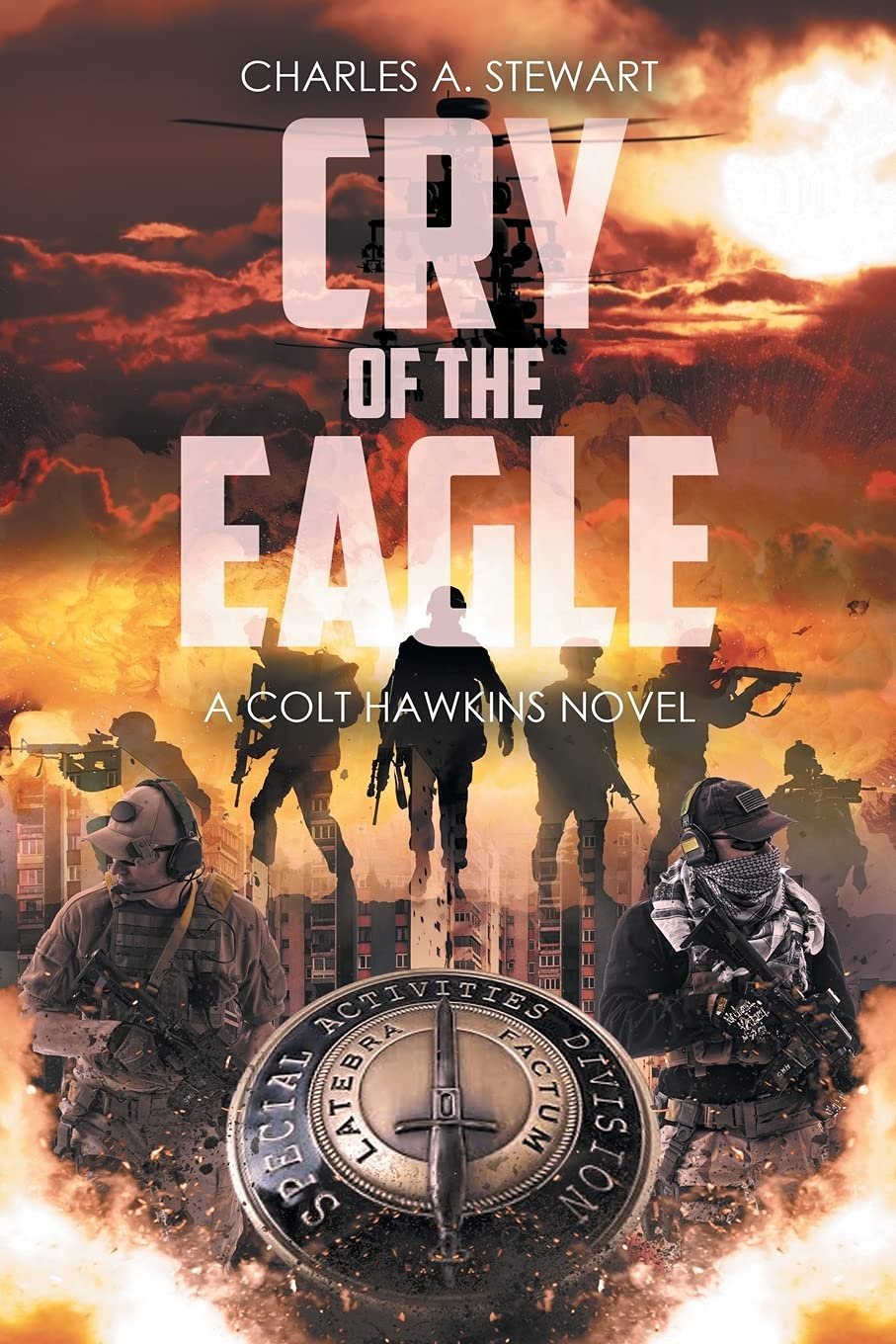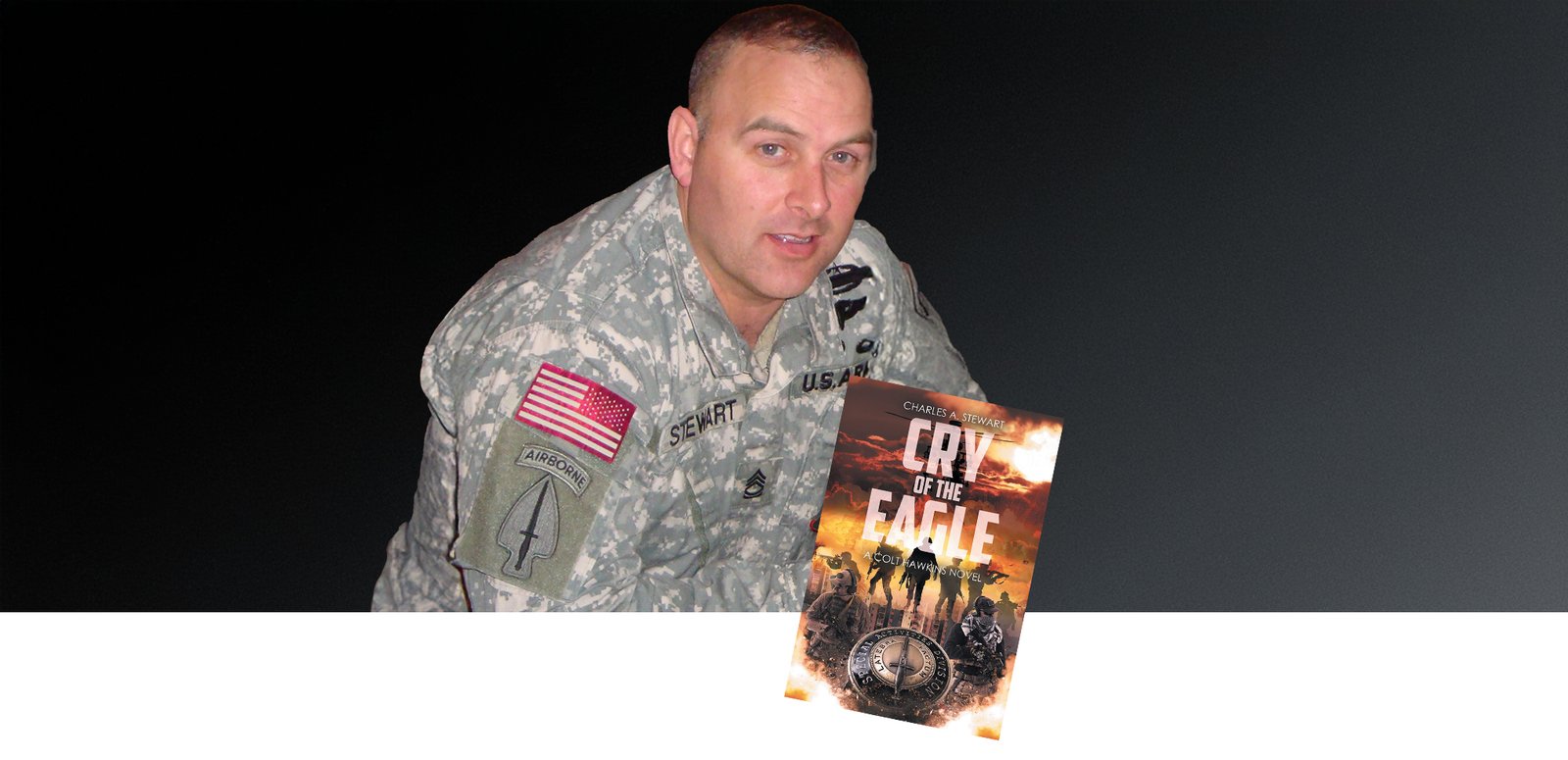PHOTO: Charles A. Stewart, decorated U.S. Army veteran and acclaimed author, captures the realities of war and covert operations through gripping, emotionally charged fiction.
Inside The Mind Of A Military Thriller Master
Charles A. Stewart draws on his 26-year Special Operations career to deliver gritty, authentic thrillers with emotional resonance, crafting complex characters and high-stakes missions rooted in lived experience.
Charles A. Stewart writes with the unmistakable authority of one who has walked through fire and returned bearing truth. A decorated veteran of seven combat deployments and three Bronze Stars, Stewart carries into his fiction a hard-won knowledge of sacrifice, duty, and the intricate human bonds formed in the crucible of war. His novels do not merely tell stories—they reveal them, immersing readers in a world where courage and consequence are entwined, and every decision echoes far beyond the battlefield.
In Sky Thunder, Stewart returns to the world he first built in Cry of the Eagle, pushing the stakes higher and the emotional terrain deeper. With a steady hand, he draws us into a high-stakes operation that spans continents and ideologies, yet remains profoundly intimate. The pulse of geopolitics beats alongside the hearts of characters we come to know and care for—none more so than Colt Hawkins, whose quiet strength and evolving humanity give this story its soul.
Stewart’s prose is unflinching and rich in texture, layered with a realism born of lived experience. Yet what sets his work apart is not only its tactical precision, but its emotional candour. Love, fear, betrayal, and hope breathe within these pages, allowing readers to feel the weight of every choice his characters must make.
In a genre often marked by bravado, Charles A. Stewart offers something far more enduring: truth told through fiction, sharpened by experience and softened by empathy.
How did your extensive 26-year military and Special Operations experience shape the authentic tone and tactical realism in Sky Thunder and Cry of the Eagle?
As I began writing my first novel, Cry of the Eagle, I realized I had an opportunity that few authors in my genre have: to be authentic within the story. I utilize my firsthand knowledge to craft a realistic and engaging narrative of military culture, operational procedures, the psychological impacts of combat, and the nuances of interpersonal relationships within a military or paramilitary unit. I believe this allows me to move beyond generic tropes and clichés, with the hope that it will resonate with readers.
What inspired the creation of protagonist Colt Hawkins, and how does he evolve from Cry of the Eagle to Sky Thunder?
Colt’s creation is a combination of several warriors that I have worked with, and parts of me sprinkled in. At the beginning of Cry of the Eagle, Colt has already been a seasoned operator with Delta Force and has had introductions to the CIA on various missions. During that time, he was in a bad personal relationship. Something relatable to people in uniform and anyone else, that he has emotions and feelings just like everyone else. But for the most part, Colt is alone, as the responsibility has always been his team’s, with him putting himself last. I wanted to use this to help the reader connect with the character beyond wearing the uniform. Cry of the Eagle does that.
Colt evolves due to his relationship with Dr. Liberty Starr. He/ they are in love. Colt starts thinking of life afterwards. His decision-making isn’t just about him and the team; Liberty is very much part of his decision-making now. Especially her position with NASA reveals the underbelly of threats in the world. Liberty sees this up close and personal for the first time. Colt can now share work-related information that would usually be off-limits. She provides an outlet for him, creating a special bond between the two of them, which neither has had before.
In Cry of the Eagle, the plot centres on the retrieval of a crashed NASA satellite in Turkmenistan – what drew you to merge geopolitics with space era technology?
I don’t know where it came from. I was trying to think of a plot that hasn’t been used before. I have always been a fan of NASA and its space programs, and I knew Colt’s future partner would be a smart, strong, and intelligent woman. You have to be pretty smart to work for NASA, I thought. It provided me with a backstory on the relationship. With NASA involved, I had unlimited possibilities to create.
Both novels feature the CIA Special Activities Division’s Task Force 24 – how much of the team dynamics reflects real units you served in?
I base all my writing on the team’s dynamics and my own experiences. As my writing has evolved, I wanted to delve deeper into characters and the dynamics, as you mentioned. Sky Thunder reveals those little, crass remarks during a stressful situation or when someone has a joke or comments on something or to someone to keep things light-hearted in a stressful environment. I believe this adds realism to the characters.
Readers mention sparks of romance amid the action – how do you balance emotional arcs with intense military thriller pacing?
One of my favorite authors did this the best, W\.E.B. Griffin. His books inspired me when I was starting my military career. The balance isn’t easy; you can’t have 100% action at all times. The romance adds depth to the characters and provides opportunities for readers to connect on an emotional level. I work hard for that balance. Most of those scenes are decided during the outline phase. However, I have a large team of female professionals serving as my beta readers, who provide me with valuable feedback on whether to add or remove elements within the story.
Your villains—Russian mercenaries, Iranian-trained terrorists—feel equally nuanced; how do you research and humanise these adversaries?
I read somewhere, I think it was Story by Robert McKee, that you have to love your villains. Again, W\.E.B. Griffin was one of the masters in this regard. His pacing, development, and personality provide an excellent blueprint for aspiring authors, regardless of genre. I used Iran due to the real-life proxies they use. I wanted to humanize Wahid and explore how his experiences with events and people in his life shaped him, his meeting with Vlad, and how that evolves. Vlad is exploiting Wahid for his agenda to attack America. Wahid understands the game, but it allows him to accomplish his goal, which is simple: revenge.
As a relatively new author, how have fan and critical responses influenced your direction for the Colt Hawkins series?
Great question! I have added stronger female characters in various positions in government and on Task Force 24. I think this adds more to the realism of paramilitary operations inside the CIA.
I want to hear more from my fans. We are currently building a piece inside my website called the “Team Room,” where fans can dive deeper into Task Force 24 with all the character bios. Additionally, fans can have their input and voice their thoughts on my books and characters.
I am looking forward to that piece, as for the critical responses. Most of it has been positive, and to go deeper into my characters, which I have with Book III, Rogue Vengeance.
What practical advice would you offer to aspiring authors hoping to write authentic military thriller fiction based on personal experience?
Keep it real and remember your readers. Just because you know it doesn’t mean your readers will. Sometimes you need to simplify it. Don’t make it sound like an operations brief- Believe me, it doesn’t resonate with the reader all the time. Don’t dump all your information at once. Build it, develop YOUR craft!
EDITOR’S CHOICE
An electrifying military thriller, Cry of the Eagle combines action, intrigue, and emotional depth to create an unforgettable reading experience.



